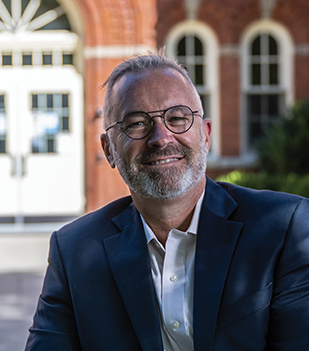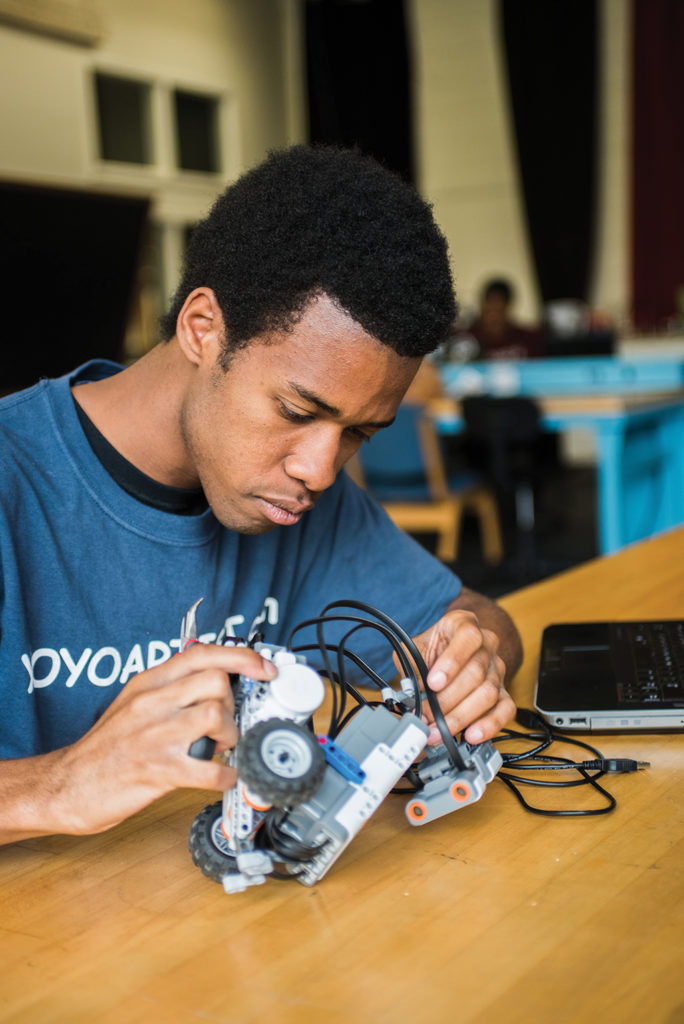
Berea College has not charged tuition since 1892, when it became ever clearer that the students the College was admitting could not afford it.
So today, as the voices across the nation rally for making tuition more affordable and even free, such a movement offers Berea both opportunity and challenge. That it’s taken more than a century for many to see how important affordability and access is for higher education is a real testimony to Berea’s long leadership. There is increasing concern that higher education cost increases are outpacing incomes. Even when President Barack Obama was in office, he admitted that over three decades, higher education as a sector increased costs by 260 percent, while family incomes during the same period increased 18 percent. And in the near future, 40 percent of college students will be below the poverty line.
One of Berea’s challenges is how to maintain its edge in terms of affordability, access and especially quality so students of high academic promise and low economic means will continue to be attracted to the institution.
One of the most important components of a Berea College education is the many value-added aspects it offers students. Dedicated faculty and staff committed to student mentoring is essential. The Labor Program is also fundamental, and students’ perception of it moves from obligation to opportunity as they work their way through the Berea College experience. It provides students significant ways to align academics and work and offers myriad workplace experiences for the world beyond.

Our admissions team presents the many Berea value-adds as the No-Tuition Promise plus, because it is necessary to challenge preconceptions that what is free or affordable is necessarily of dubious quality. (You can Google the “Chivas Regal Effect” to get a sense of how these perceptions work.) We need to convince students and parents that at Berea they can have both affordability and high quality, the real differentiator that separates Berea from other institutions. So, the messaging to prospective students and their families often involves “not-just” examples:
- It’s not just an internship—it’s a paid internship aligned closely with one’s interests and goals.
- It’s not just a Labor Program—it’s a career development program that deepens soft skills and broadens hard skills.
- It’s not just a study abroad trip—it’s a significantly funded trip to expand global perspective.
- It’s not just career development—it’s intentional mentoring, planning and unparalleled funding to launch a post-graduate experience.
- It’s not just a convocation—it’s a free opportunity to hear from world-renowned speakers and performers
to deepen understanding on major topics.
There is also a nuanced but significant difference between the way Berea uses Pell monies and the way many other institutions apply these federal dollars. Many schools will use them as first-resort funds, meaning Pell monies are applied to tuition. But doing so leaves little to no money for housing and meals, leaving students responsible for these costs. Berea uses Pell as last-resort funding, because alumni and friends have contributed to the endowment and annually to the Berea Fund. Tuition is covered, which leaves Pell grant funds to be used for housing and meals. It’s a key reason Berea students graduate with the lowest debt in the country when they accumulate debt at all; nearly half graduate debt-free.
Learning across difference is one of the most important and proven value-added characteristics of a high-quality educational experience. Berea, from 1855, has this down cold, much more so than many other institutions where the importance of diversity and inclusion were realized only in the last few decades.
Dr. Chad Berry
There are several other key ingredients that make up the “secret sauce” that enables Berea College students to flourish.
One of these is the deep support that comes with a Berea experience, support that goes well beyond free tuition. Access without support is not the same thing as opportunity. For the population we serve, in fact, access without support is just inhumane. We can provide the support that makes the difference because we know the students whom this institution serves. Examples:
- A brand-new laptop at move-in day to transcend the digital divide.
- A free dental clinic so students can have access to high-quality dental care, many for the first time in their lives.
- A number of campus centers (e.g., the Loyal Jones Appalachian Center, the Black Cultural Center, the Center for Excellence in Learning through Service, the Espacio Cultural Latinx, the Carter G. Woodson Center, the Francis and Louise Hutchins Center for International Education, the new bell hooks center, etc.) that serve as supportive “living rooms,” where students find comfort and support that works for their identity.
- A $500 stipend given to each graduate at graduation to pay a security deposit for an apartment or for other expenses, whether going to graduate school or starting a career.

Beyond providing supportive centers, another key ingredient of the Berea College experience is diversity writ large—race, place, ethnicity, religion, gender, perspective—following founder John G. Fee’s radical sense of inclusion and Berea’s motto that “God has made of one blood all peoples of the earth.” Learning across difference is one of the most important and proven value-added characteristics of a high-quality educational experience. Berea, from 1855, has this down cold, much more so than many other institutions where the importance of diversity and inclusion were realized only in the last few decades.
The final key ingredient may be surprising, but it is essential to student success and satisfaction. This involves socioeconomic homogeneity. At Berea, all students are in the same boat, and that leveling means students are not constantly reminded about what they don’t have compared to their peers. The more prevalent situation, particularly at well-resourced schools, is that a low-income student might arrive on campus via Greyhound bus while one’s roommate might arrive in a brand-new luxury SUV or even a family’s private jet. What a blessing that Berea is free of that kind of inequality!

President Lyle Roelofs, reflecting on the value of free, particularly in comparison to other fine institutions where he has served, notes that “part of the deep pleasure of being part of the community is that Berea students are free to be normal college students. They work hard, they struggle with hard classes and cope with labor assignments in addition. They protest injustice. They complain when the College falls short of its aspirations. They struggle to come to terms with a complicated present. They worry about their future. They find friends who will be with them for life. They form bonds with amazing professors and labor supervisors who become models for them. Some even become friends with and run or walk with the president and the first lady.” Most importantly, he says, “At Berea this genuine college experience is not reserved only for the affluent; it is possible only because Berea has been designed for them and for them alone.”
And this, of course, is the most essential Value of Free.

